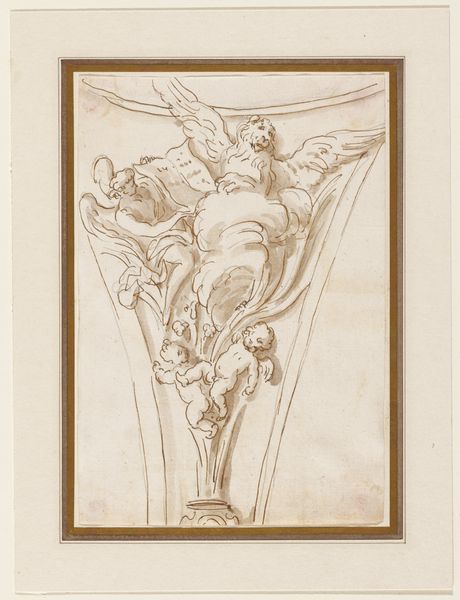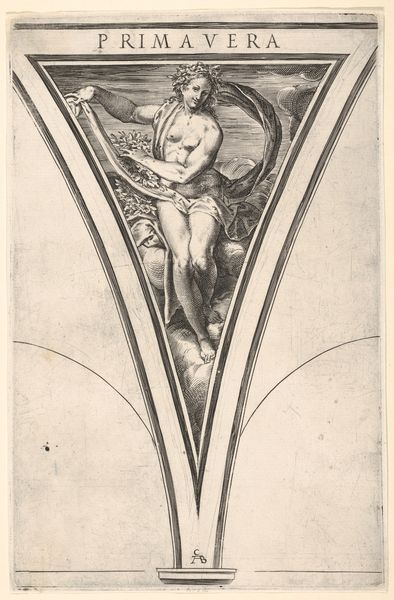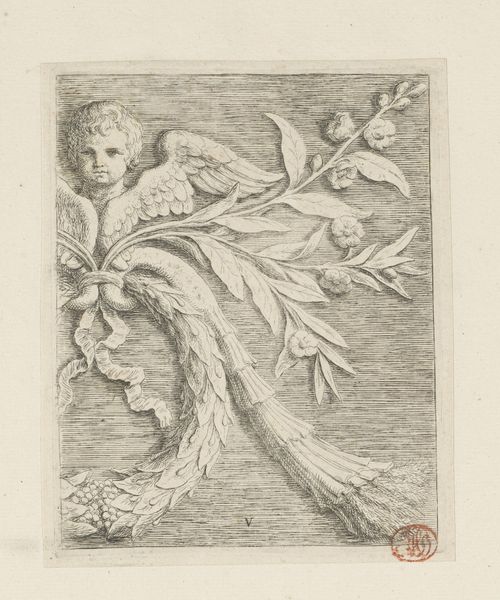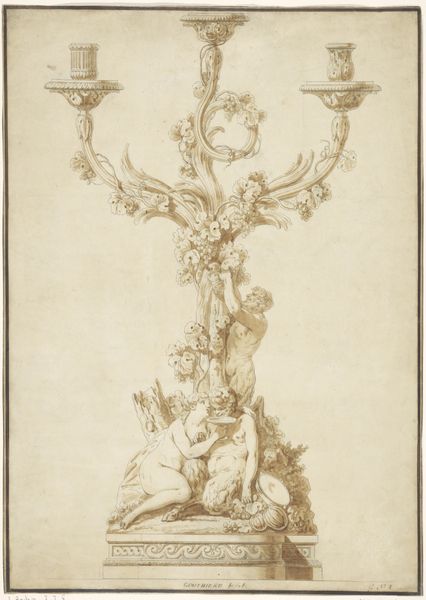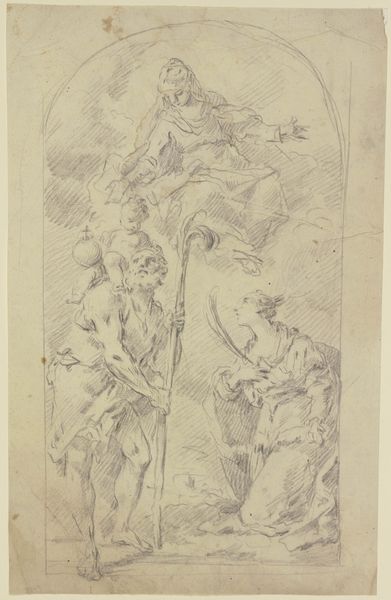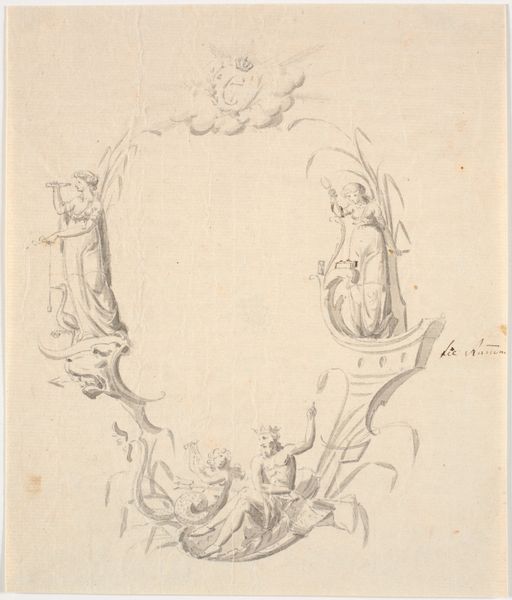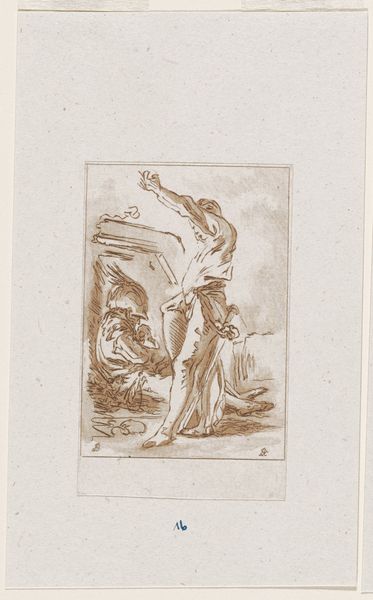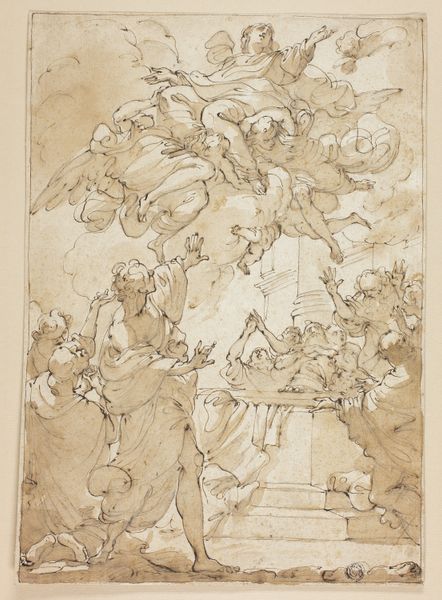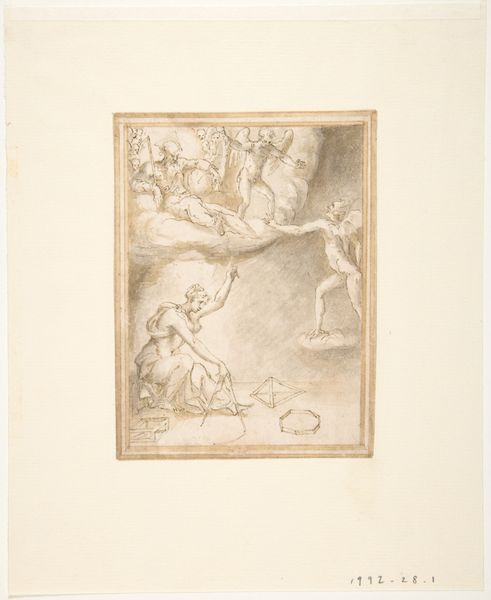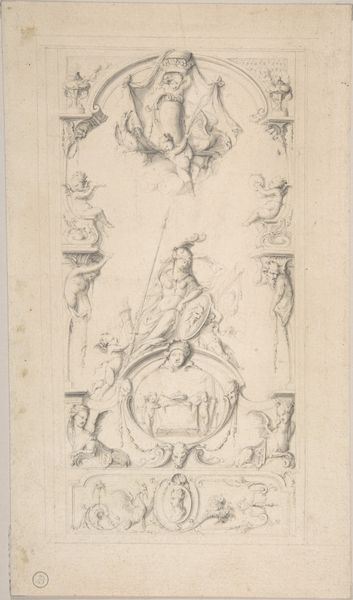
Spandrel Study- Angels with the Symbols of St. John 1747 - 1755
0:00
0:00
drawing, paper, ink
#
drawing
#
decorative element
#
allegory
#
baroque
#
paper
#
ink
#
history-painting
#
decorative-art
Dimensions: 8 7/8 x 6 1/16 in. (22.54 x 15.4 cm) (sheet)
Copyright: Public Domain
Curator: This captivating ink drawing, rendered on paper, is entitled "Spandrel Study - Angels with the Symbols of St. John." Joseph Wilton conceived this Baroque piece between 1747 and 1755. It now resides here at the Minneapolis Institute of Art. Editor: Oh, it’s a flirty little drawing, isn’t it? All swirls and suggestion, like a dream half-remembered. Angels frolicking in clouds of coffee— or maybe sepia, given its vintage? Curator: Indeed. We can view it through the lens of allegorical representation, very common for the era. Wilton presents angels bearing symbols associated with Saint John, nestled within what appears to be an architectural spandrel— that curved, triangular space between arches. Editor: Spandrel! Sounds like something out of a fairy tale. Anyway, those angels! One is clutching a tablet, maybe the Gospel? And the other is throwing flowers around as though life is the best parade imaginable! There is also what appears to be some type of winged, almost eagle-like creature hovering near the top. What could that be? Curator: Ah, the eagle is one of the principal symbols of St. John the Evangelist. Throughout Christian art, this creature symbolizes the evangelist’s lofty spiritual insights. Also of interest is how the representation adheres to, but also perhaps slightly deviates from, established iconography. The placement of the figures and symbols, while recognizable, isn’t strictly conventional, pointing to the artist’s individual interpretation and creative freedom. Editor: Creative freedom. I dig it. It has this real "anything goes" energy about it that gives me a sense of pure creation! What's particularly fun is its incomplete quality: it feels alive in its becoming. Imagine stumbling upon this sketch in the artist’s studio centuries later. Curator: An excellent point. Considering Wilton’s broader practice and period context offers enriched perspectives, definitely. As the decorative arts flourished during the Baroque era, pieces like this reflect how classical and religious motifs continued to be repurposed. Editor: This image reminds me that art doesn’t always have to shout, and it also has the power to whisper to us across time. It gives this real invitation to daydream in sepia tones... Curator: It most certainly does, providing avenues to understand artistic evolution through complex social narratives. A beautiful and multifaceted offering from Wilton.
Comments
No comments
Be the first to comment and join the conversation on the ultimate creative platform.
